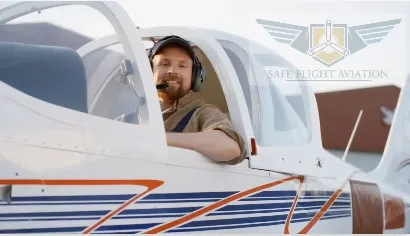How to Earn a Private Pilot License

How to Earn a Private Pilot License
Earning your private pilot license comes with plenty of benefits. From having the chance to see things from a different perspective – literally and figuratively – to demonstrate your ability to commit to a goal and accomplish it, you get a whole lot more out of learning to fly than simply getting where you need to go at a faster pace. With a private pilot license, you’re allowed to fly any non-turbojet plane that weighs under 12,500 pounds, opening plenty of doors for new experiences and exciting adventures. If you’ve got the ambition and desire to earn your private pilot license, here are the steps you need to take to accomplish your goal.
General Eligibility
Your first step is to check your eligibility. In order to meet the eligibility criteria for a private pilot certificate, you’ve got to be at least 16 to fly a glider or balloon or 17 to fly anything else. You’ve also got to be able to “read, speak, write, and understand the English language,” according to the Code of Federal Regulations.
Basic Training
The next step is to go through your basic knowledge training. Once you’ve completed either in-person training or home study based on aeronautical knowledge, you will have to have a logbook endorsed by an authorized instructor who can attest to your knowledge; this in-person or home study is called your “ground training.” That instructor has to sign off on your readiness for the knowledge test, and then once you get the go-ahead, you have to take and pass the aeronautical knowledge test.
Aeronautical Knowledge Test
Once your professional trainer has confirmed that you’re ready to take the test based on your ground training, you’ll be given the Private Pilot Knowledge Test that includes – but is not limited to – the following topics:
· Federal Aviation Regulations related to private pilot policies,
· National Transportation Safety Board requirements for accident reporting,
· Applicable information from the “Aeronautical Information Manual,”
· Applicable information from the FAA advisory circulars,
· How to use aeronautical charts & how to properly use radio communications,
· How to recognize safely concerns related to weather, avoiding collisions, operation of the aircraft, and turbulence,
· The various calculations you need to make and principles you need to understand in order to take off, climb, keep the plane balanced, and safely maintain your aircraft during flight,
· How to make good aeronautical decision making during flight, &
· How to prepare for flight through appropriate steps during preflight actions.
Flight Training & Proficiency
If you’ve passed your knowledge test, it’s time to take to the skies! You’ll have to sign up for in-person training from an authorized instructor. This instructor will keep a logbook that they will endorse to certify that you’re prepared for the “practical test.” Whereas the written knowledge was your ground training, this is your flight training.
As a part of your flight training, according to the FAA, you have to log “at least 40 hours of flight time, of which at least 20 hours are flight training from an authorized instructor and 10 hours of solo flight training in the appropriate areas of operation; three hours of cross country; three hours at night, three hours of instrument time; and other requirements specific to the category and class rating sought.” For a private pilot license, the “other requirements” include 3 hours of flight training in a single engine airplane within the 60 days prior to the practical test. Plenty of specifics must be met in both dual and solo flight requirements, so having a qualified and respected instructor to guide you will be an asset as you prepare for this process.
Your Private Pilot Practical Tests include an oral discussion first, followed by a hands-on assessment during which you have to actively demonstrate your ability to operate an aircraft within your specific category and class rating. The oral portion of the test keeps you on the ground and takes about an hour and a half to complete, but according to experts, the actual hands-on flight portion generally takes about an hour to complete. The entire testing process adds up to around 4 hours.
And Up You Go!
As soon as you pass your tests, you are immediately allowed to fly. You don’t have to wait to get your official pilot’s certificate in the mail because you’ll be issued a temporary one, much like your experience waiting for your driver’s license. You can safely and legally take to the skies as soon as you’ve passed your tests!
When it comes to personal goals and dreams, some are easy to set aside, while others will tickle your brain until you achieve them. If the idea of flying is one of those obsessions for you, then it’s time to start the process of earning your private pilot license.
Stop dreaming and start flying. Call or text us today at (757) 821-7355, and we will get you on the flight schedule.
